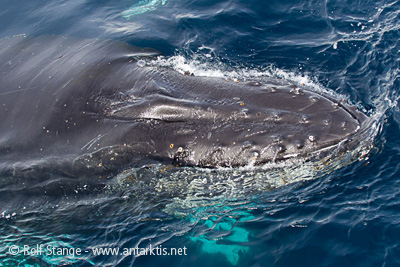Seitenstruktur
-
Spitsbergen-News
- Select Month
- March 2020
- February 2020
- March 2019
- January 2019
- December 2018
- September 2018
- June 2018
- May 2018
- April 2018
- March 2018
- February 2018
- January 2018
- December 2017
- November 2017
- October 2017
- September 2017
- June 2017
- May 2017
- April 2017
- March 2017
- February 2017
- January 2017
- December 2016
- September 2015
- April 2015
- March 2015
- February 2015
- January 2015
- December 2014
- October 2014
- August 2014
- June 2014
- May 2014
- April 2014
- March 2014
- November 2009
- April 2000
- Select Month

| Grytviken |
Home
→ October, 2017
Monthly Archives: October 2017 − News & Stories
Slow recovery of whale population after industrial whaling
When you are talking about the “slow recovery of whale population after industrial whaling”, then the emphasise is on “slow” rather than on “recovery”, depending on the species. All large baleen whale species where hunted intensively with industrially brutal methods in the southern hemisphere, mostly between 1890 and 1970, although whaling (mainly by Japanese whalers) is still an ongoing fact, as most readers will be aware of. Natural, pre-whaling populations were reduced to fractions. The actual size of the original populations can only be estimated.
With today’s knowledge of reproduction, food resources etc., predictions of the future development of whale populations can be made. Of course, there are uncertainties inherent as with any model-based (or other) prediction, but some trends are nevertheless quite clear.
Humpback whale in Gerlache Strait: back to a natural population size around 2050?
Results vary, depending on the species, as a recent study by Australian biologists shows. Humpback whales may be back to a natural population level, estimated near 100,000 individuals, as “soon” as around 2050. Currently, there is only a third of that number around, but humpback whale cows may give birth to a calf every year and they are benefitting from a solid nutrition base.
The larger species such as fin, blue and southern right whales will take more time. Their females five birth only once in 2-3 years. Recovery is accordingly much slower, and population levels may not be more than half of the original size in 2100, more than 100 years after whaling mostly came to an end. Factors like climate change and its influences on the marine food web and the potential threat of more whaling in the future bring additional uncertainty.
Source: csirau.au
News-Listing live generated at 2025/June/15 at 13:57:31 Uhr (GMT+1)


























